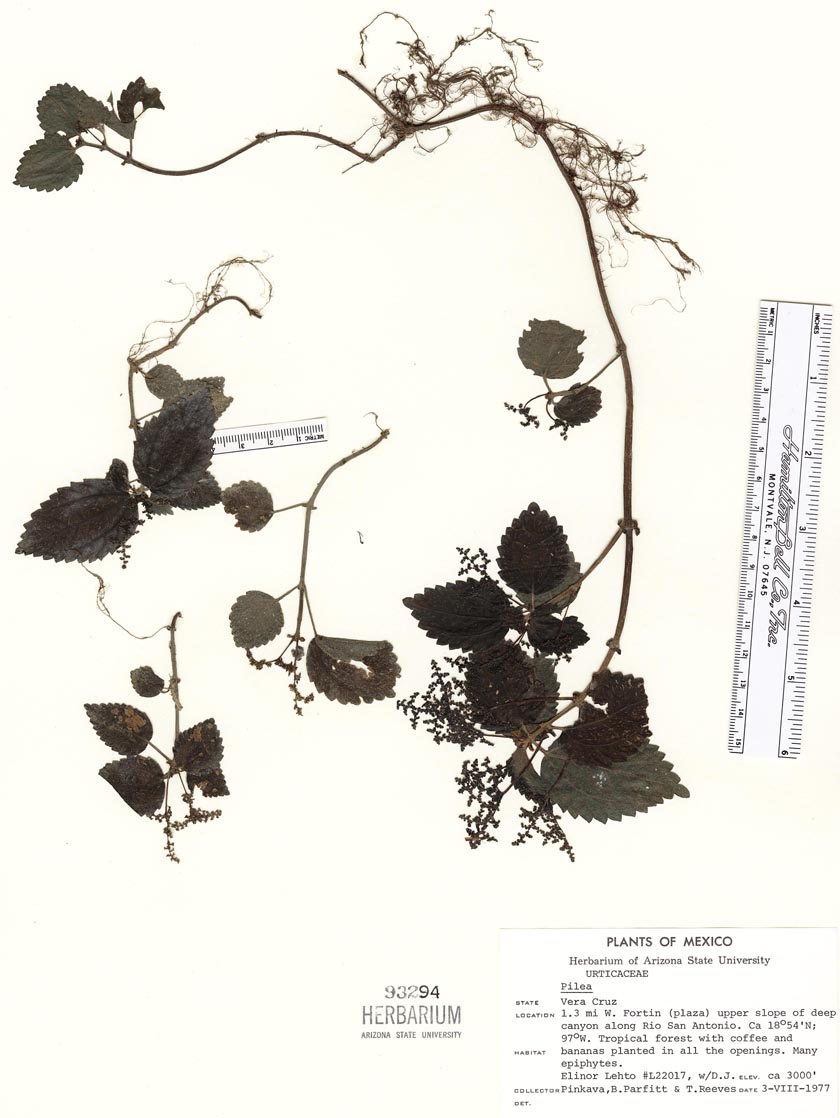Pilea
|
Family: Urticaceae |
Herbs, shrubs, or subshrubs , annual or perennial, glabrous. Stems simple or branched, erect, ascending, or repent. Leaves opposite; stipules present. Leaf blades paired, equal or unequal, ovate, margins dentate or entire; cystoliths linear, ± conspicuous. Inflorescences axillary, compact to lax cymes. Flowers unisexual, staminate and pistillate flowers in same cyme; bracts deltate to linear. Staminate flowers: tepals 4; stamens 4; pistillode conic. Pistillate flowers: tepals 3, equal or sometimes 1 tepal enlarged and hoodlike; staminodes 3, opposite tepals, under tension and ejecting mature achene; style and tufted stigma deciduous. Achenes sessile, laterally compressed, ovoid to teardrop-shaped, free from perianth at maturity, partly covered by hoodlike tepal. x = 12, 13. Pilea should be further revised. SELECTED REFERENCES
Monoecious or dioecious; cal of the male fls deeply 4-parted; stamens 4; cal of the female fls deeply 3-parted, the segments often unequal or gibbous or hooded; staminodes minute, scale-like; stigma sessile; fr a compressed, thin- walled achene, loosely subtended by the persistent cal; herbs with opposite lvs, inconspicuous, connate stipules, and axillary cymes of small, greenish fls, the numerous cystoliths appearing as minute, whitish lines on the surface of the lf in herbarium-specimens blades with scattered, minute stinging hairs. 200, mainly trop. Gleason, Henry A. & Cronquist, Arthur J. 1991. Manual of vascular plants of northeastern United States and adjacent Canada. lxxv + 910 pp. ©The New York Botanical Garden. All rights reserved. Used by permission. |

